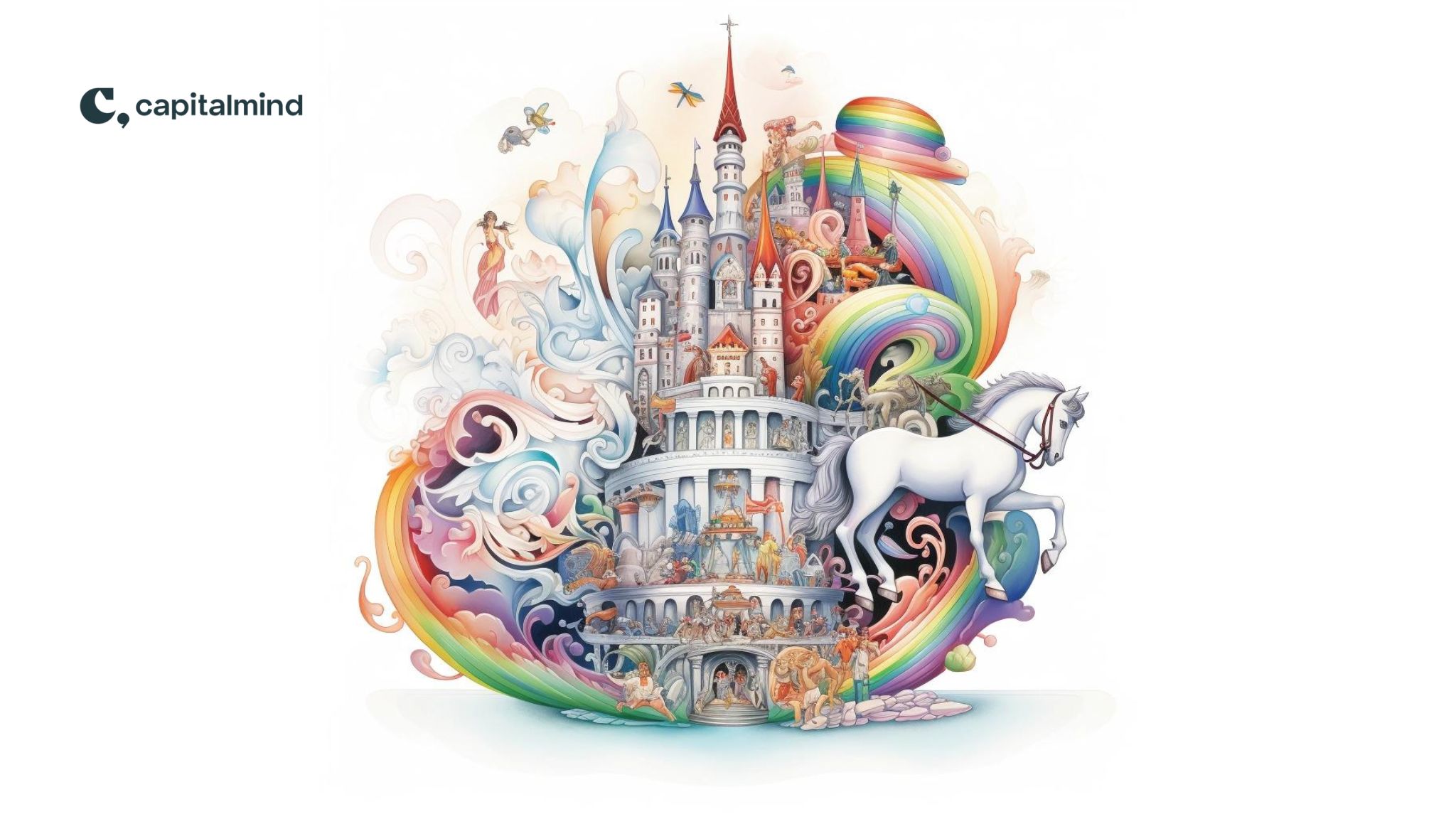Disclaimer: This post is a question without an answer. It is also not about investing.
In the winter of 1799, George Washington, the first President of the United States, is living a peaceful retirement at his plantation, Mount Vernon. On December 12, he spends much of the day outside in cold, wet weather, inspecting his lands. The next day, he wakes up with a sore throat but doesn’t think much of it and goes about his day as usual.
However, by the evening of December 13, his condition worsens significantly. He develops a severe sore throat and difficulty breathing. Despite his discomfort, Washington is reluctant to wake the household and waits until the following morning to seek help.
On the morning of December 14, Washington’s condition has not improved. He can barely speak and is struggling to breathe. Alarmed, his wife Martha sends for the family’s physician, Dr James Craik. However, before Dr Craik arrives, Washington’s overseer, who has some medical knowledge, is called in. He suggests performing a procedure known as bloodletting, a common medical practice of the time believed to rebalance the body’s “humours” and promote healing.
Washington, ever the soldier and statesman, bravely agrees to the procedure. Over the course of the day, he undergoes several rounds of bloodletting, which remove about five pints of blood from his body. Despite these efforts, his condition continues to deteriorate.
When Dr Craik arrives, he continues the bloodletting procedure. Also, he tries other treatments, including administering a mixture of molasses, vinegar, and butter and applying a poultice of cantharides, a type of blister beetle, to Washington’s throat to create a blister and draw out the “ill humours.”
Despite these efforts, Washington’s condition worsens. He remains calm and composed, giving instructions for his will and thanking his servants for their efforts. Late in the evening of December 14, 1799, George Washington passes away. His last words are reported to be, “Tis well.”
Many historians and medical experts today believe that the bloodletting procedures intended to help likely contributed to Washington’s death by causing severe blood loss when he was already critically ill.
Bloodletting is one of the oldest known medical practices, dating back 3,000 years to ancient Egypt. It peaked in Europe during the Middle Ages and remained a common treatment in Western medicine until the late 19th century.
The practice was based on the ancient system of medicine known as humorism, which was developed by the Greek physician Hippocrates and later expanded by Galen. According to this system, the human body is filled with four basic substances, known as the “four humours”: blood, phlegm, black bile, and yellow bile. Illness was believed to result from an imbalance of these humours, and bloodletting was used to restore this balance.
Bloodletting was performed in several ways. The most common method was venesection, in which a lancet or a similar instrument directly punctured a vein. Another method was scarification, which involved making small cuts on the skin, followed by the application of heated cups to draw out blood (a practice known as cupping). Leeches were also commonly used for bloodletting, particularly for more delicate body areas.
The practice of bloodletting began to decline in the 19th century as new scientific findings challenged the theory of the four humours. French physician Pierre Charles Alexandre Louis’s research in the 1820s and 1830s, showed that bloodletting was ineffective in treating pneumonia and various other diseases.
Today, bloodletting is recognized as generally harmful to patients. While there are a few specific conditions (like hemochromatosis and polycythemia) where therapeutic phlebotomy is used to remove excess iron or red blood cells from the body, the indiscriminate bloodletting of the past is seen as a dark chapter in the history of medicine.
The Earth is the center of the universe
This belief was based on the geocentric model of the universe, developed by ancient Greek astronomers such as Ptolemy and Aristotle. They assumed that the Earth was stationary and that the Sun, Moon, planets, and stars moved around it in circular orbits. Most people accepted this model for centuries until it was challenged by the heliocentric model of Copernicus, Galileo, and Kepler, who showed that the Earth and other planets revolved around the Sun. Observations of planetary motions, phases of Venus, and lunar eclipses supported this model. Various studies and discoveries debunked this belief in the 16th and 17th centuries.
The Malthusian Catastrophe
This belief was based on the idea that population growth would inevitably outstrip food production and lead to widespread famine, disease, and war. Thomas Malthus, an English economist and cleric, proposed this idea, who predicted in 1798 that population would grow geometrically while food production would grow arithmetically. He argued that the only way to prevent this catastrophe was to limit population growth through moral restraint or natural checks such as poverty, disease, and war. However, this belief was debunked by various evidence from agriculture, technology, economics, and demography that showed that food production had increased faster than population growth due to innovations such as fertilizers, irrigation, mechanization, biotechnology, and trade. Moreover, population growth has slowed due to urbanization, education, contraception, and lower mortality.
Vaccines cause autism
This belief was based on a fraudulent study by Andrew Wakefield, a British doctor, who claimed in 1998 that there was a link between the measles-mumps-rubella (MMR) vaccine and autism in children. His study was based on a small sample of 12 children, some of whom had undisclosed conflicts of interest and legal involvement. His study was later retracted by the journal that published it, and he was stripped of his medical license for ethical violations and misconduct. Wakefield’s study sparked a global anti-vaccine movement that persists to this day, despite numerous studies showing no association between vaccines and autism.
The list goes on:
Steady State Theory: The universe does not evolve or change with time. Disproved by the discovery of Cosmic Microwave background radiation in 1965. Since replaced by the Big Bang Theory
Spontaneous Generation: The idea that life could spontaneously arise from non-living matter, like mice appearing from grain and frogs from wet mud. Widely accepted till the 19th century, disproved by Louis Pasteur’s experiments in the 1860s
Lobotomy for mental illness: A surgical procedure involving severing connections in the brain’s prefrontal lobe was seen as a promising treatment for various mental illnesses. It had severe side effects, including personality changes, cognitive impairment, and in some cases, death. Abandoned by the 1970s in favour of less invasive and more effective treatments
Blank Slate Theory: aka Tabula Rasa, that individuals are born without built-in mental content and that all knowledge comes from experience or perception. Advances in genetics and psychology in the late 20th century showed the influence of genetic factors on human behaviour and cognition.
Bad ideas are not restricted to grand scientific theories and medical procedures.
Why is history littered with bad yet widely accepted ideas that make us go “What were we thinking”?
Were we collectively less intelligent and more gullible back in the day? Unlikely.
Bad ideas are inseparable from the process of coming up with ideas.
Imagine being a doctor in the 1850s and being told that you should wash your hands after conducting autopsies on corpses and before delivering babies because things on your hands that were too small to be visible were responsible for so many women dying after giving birth. Hungarian physician Ignaz Semmelweis tried to tell his colleagues. They rejected his idea.
Take any time in history; some ideas and concepts were widely accepted based on what we knew then. Widely enough that bloodletting was considered treatment fit for a former president of the United States. That was over two centuries ago. But the practice persisted well into the 19th and early 20th centuries. What the hell were we thinking?
This post is a question without an answer. That question isn’t, why were there so many bad ideas?
The question is, which of today’s widely accepted practices will look as ridiculous in a decade as doctors refusing to wash hands before surgery, pregnant women taking thalidomide for morning sickness, or Lysol as a feminine hygiene product?
Because you can be sure they’re out there. Integral parts of our daily lives.
So far the only (partial) solution I’ve found is to be sceptical. To hold beliefs lightly and not unquestioningly. To be willing to change when the evidence starts piling up. Because the alternative is absurd.
My tentative shortlist of “what were we thinking” potential in 2033 so far includes eating at chain fast-food restaurants, alcohol, most food things in boxes in supermarket aisles, medical care for chronic conditions, how we think about aging, eat-only-this-and-nothing-else diets, humans driving cars, and a few other topics that will push too many buttons. What’s on your list? @CalmInvestor









